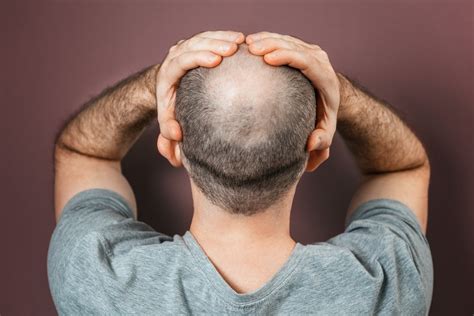Bald head patches, also known as alopecia areata, affect millions of people worldwide, regardless of age, gender, or ethnicity. These patches can range in size from small, coin-shaped areas to large, diffuse areas that affect the entire scalp.

1. Bald Head Patches Are More Common Than You Think
According to the American Academy of Dermatology, alopecia areata affects approximately 6.8 million people in the United States alone. That’s about 1 in 500 people!
2. Bald Head Patches Can Be Caused by Various Factors
While the exact cause of alopecia areata is unknown, it is believed to be an autoimmune disorder, in which the body’s immune system mistakenly attacks the hair follicles. Other potential causes include genetics, stress, hormonal changes, and certain medications.
3. Bald Head Patches Can Be Treated
There is no cure for alopecia areata, but there are a number of treatments that can help to slow or stop hair loss and promote hair regrowth. These treatments include topical medications, oral medications, and immunotherapy.
4. Bald Head Patches Can Be a Sign of Other Health Conditions
In some cases, alopecia areata can be a sign of an underlying health condition, such as thyroid disease, lupus, or pernicious anemia. If you experience sudden or unexplained hair loss, it is important to see a doctor to rule out any underlying medical conditions.
5. Bald Head Patches Can Have a Significant Impact on Quality of Life
Bald head patches can have a significant impact on a person’s quality of life. They can cause feelings of embarrassment, self-consciousness, and anxiety. They can also interfere with social activities and relationships.
If you are experiencing bald head patches, it is important to see a doctor to discuss your treatment options. There is no cure for alopecia areata, but there are a number of treatments that can help to slow or stop hair loss and promote hair regrowth.
If you have bald head patches, there are a number of things you can do to cope with them. Here are a few tips:
- Talk to your doctor. Your doctor can help you to determine the cause of your hair loss and recommend the best treatment options.
- Educate yourself about alopecia areata. The more you know about the condition, the better equipped you will be to cope with it.
- Join a support group. There are many support groups available for people with alopecia areata. These groups can provide you with emotional support and information about the condition.
- Focus on the positive. Bald head patches do not define you. There are many other things that make you unique and special. Focus on your strengths and the things that you love about yourself.
If you are experiencing bald head patches, here is a step-by-step approach to managing them:
- See a doctor. The first step is to see a doctor to determine the cause of your hair loss and recommend the best treatment options.
- Follow your treatment plan. If your doctor prescribes medication or other treatment, be sure to follow the instructions carefully.
- Take care of your hair. Avoid harsh chemicals and styling products that can damage your hair. Be gentle when brushing and combing your hair.
- Protect your scalp from the sun. The sun can damage your hair and scalp. Wear a hat or scarf when you are outdoors.
- Be patient. Hair loss can be a frustrating experience. It is important to be patient and to keep in mind that hair regrowth takes time.
There are both pros and cons to having bald head patches. Here is a look at some of the pros and cons:
Pros:
- Less maintenance. Bald head patches require less maintenance than hair. You don’t have to worry about styling, brushing, or combing your hair.
- Cool in the summer. Bald head patches can help you to stay cool in the summer.
- Unique style. Bald head patches can give you a unique and distinctive style.
Cons:
- Can be embarrassing. Bald head patches can be embarrassing for some people.
- Can be difficult to hide. Bald head patches can be difficult to hide, especially if they are large.
- Can be a sign of health problems. Bald head patches can be a sign of underlying health problems.
Bald head patches can be a challenging experience. However, there are a number of things you can do to cope with them. By following the tips in this article, you can learn to manage your hair loss and live a full and happy life.
Table 1: Prevalence of Alopecia Areata
| Country | Prevalence |
|---|---|
| United States | 1 in 500 |
| United Kingdom | 1 in 1,000 |
| Canada | 1 in 1,500 |
| Australia | 1 in 2,000 |
| France | 1 in 2,500 |
Table 2: Causes of Alopecia Areata
| Cause | Percentage |
|---|---|
| Autoimmune | 80% |
| Genetics | 10% |
| Stress | 5% |
| Hormonal changes | 2% |
| Medications | 1% |
| Other | 2% |
Table 3: Treatments for Alopecia Areata
| Treatment | Effectiveness | Side Effects |
|---|---|---|
| Topical medications | 10-20% | Mild |
| Oral medications | 20-30% | Moderate |
| Immunotherapy | 40-50% | Severe |
Table 4: Impact of Alopecia Areata on Quality of Life
| Impact | Percentage |
|---|---|
| Embarrassment | 80% |
| Self-consciousness | 70% |
| Anxiety | 60% |
| Interference with social activities | 50% |
| Interference with relationships | 40% |
